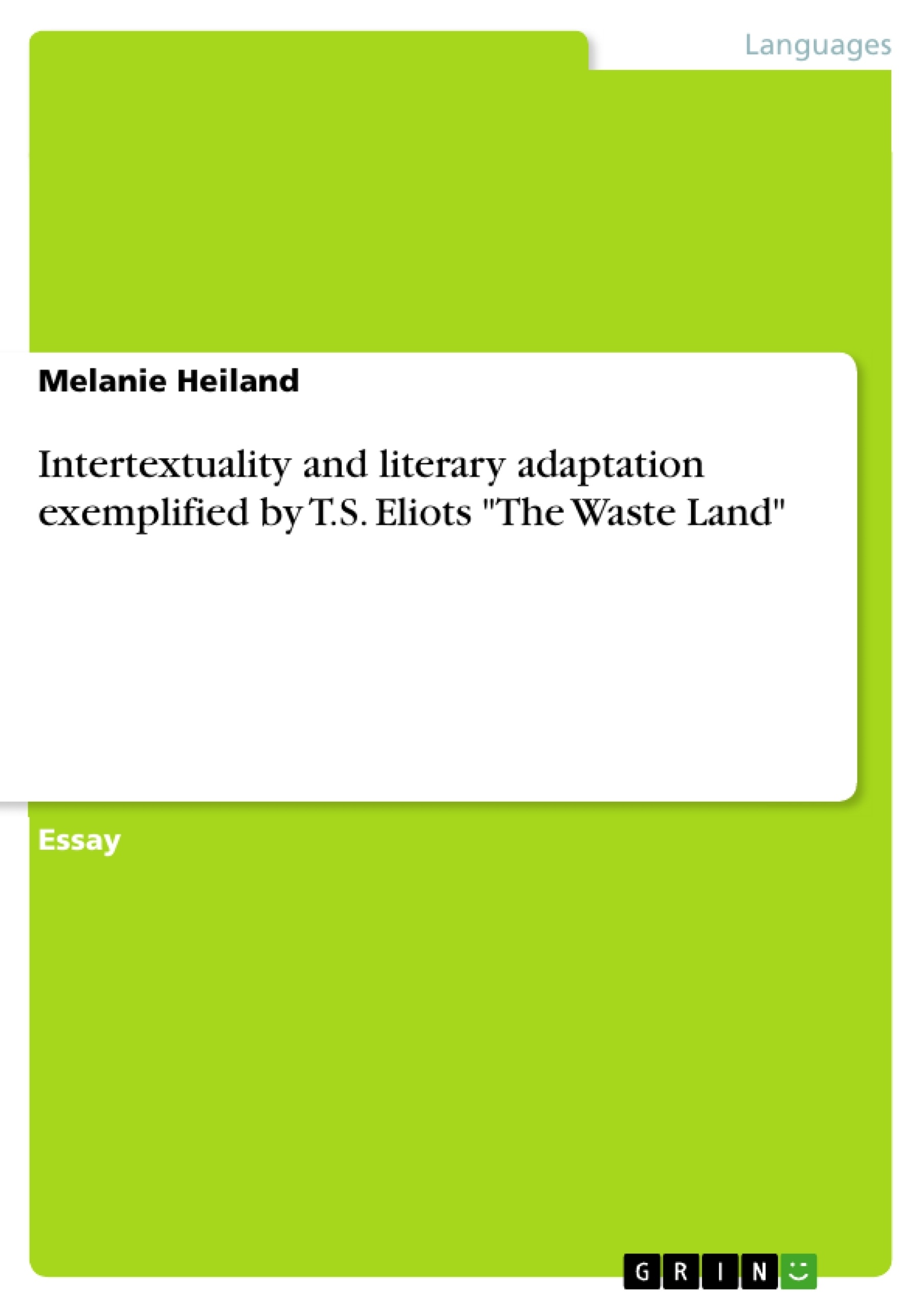“Immature poets imitate; mature poets steal“, T.S. Eliot once said himself. What he probably wanted to express with that statement was the fact that every poet takes ideas from his role models and transforms them into something new – even though one would not necessarily call this procedure “stealing”, but rather “adoption”.
This is going to be also the topic of the following essay: the adoption of a certain subject-matter over several centuries. The major part of my investigations is going to deal with T.S. Eliot’s famous poem The Waste Land. After giving a short summary of the background and creation of the poem, I am going to depict the references between Eliots poem, Geoffrey Chaucer´s The Canterbury Tales and David Lodge´s novel Small World by the example of their description of the month april. In doing so, I am going to analyse the similarities and differences concerning contents, style and adaptation of the literary material and deconstruct how the material that was first elaborated by Chaucer later is readopted and converted into a modern poem resp. narrative by Eliot and Lodge.
The following questions are going to lead through the whole essay: What are the basic issues that all of the three discussed writers deal with? How was the subject-matter that first turned up in Chaucer´s writings transformed by Eliot and Lodge? What is the main difference between the text from the 14th century and the modern readings?
The aim of this essay is to demonstrate how intertextuality works and the phenomenon that no piece of poetry is thinkable without its reference to the entirety of earlier writings.
Inhaltsverzeichnis (Table of Contents)
- Introduction
- General remarks about the poem
- Intertextuality exemplified by the motif of the April
- Adaptation and reworking of medieval material: the quest for the Holy Grail
- The Holy Grail legend in The Wasteland
- Romance structure and Arthurian matters in Small World
- Conclusion
- References
Zielsetzung und Themenschwerpunkte (Objectives and Key Themes)
This essay aims to demonstrate how intertextuality functions in poetry, specifically by analyzing the influence of earlier works on T.S. Eliot's "The Waste Land." It examines the reworking of literary material across centuries, focusing on the theme of April and its significance in "The Waste Land," Geoffrey Chaucer's "The Canterbury Tales," and David Lodge's "Small World."
- The influence of earlier writers on later works
- The concept of intertextuality in literature
- The transformation of literary material across time and genre
- The portrayal of the month of April in different literary contexts
- The use of historical and religious references in poetry
Zusammenfassung der Kapitel (Chapter Summaries)
- Introduction: This chapter introduces the concept of intertextuality, referencing T.S. Eliot's quote about mature poets "stealing" from their predecessors. It outlines the essay's focus on the adoption of literary material in "The Waste Land," particularly the theme of April. The chapter also presents the key questions that will guide the analysis.
- General remarks about the poem: This chapter provides background information on "The Waste Land," including its publication date, dedication to Ezra Pound, and the poem's influence on 20th-century literature. It discusses the initial reception of the work and its unconventional nature, which challenged traditional poetic norms.
- Intertextuality exemplified by the motif of the April: This chapter analyzes the depiction of April in "The Waste Land," "The Canterbury Tales," and "Small World," exploring the similarities and differences in how the month is portrayed. It examines the relationship between meteorological phenomena, human behavior, and religious themes in each text.
Schlüsselwörter (Keywords)
The main keywords of this essay include: intertextuality, literary adaptation, T.S. Eliot, The Waste Land, Geoffrey Chaucer, The Canterbury Tales, David Lodge, Small World, April, motif, symbolism, religion, history, and mythology.
- Quote paper
- Melanie Heiland (Author), 2011, Intertextuality and literary adaptation exemplified by T.S. Eliots "The Waste Land", Munich, GRIN Verlag, https://www.grin.com/document/448724



